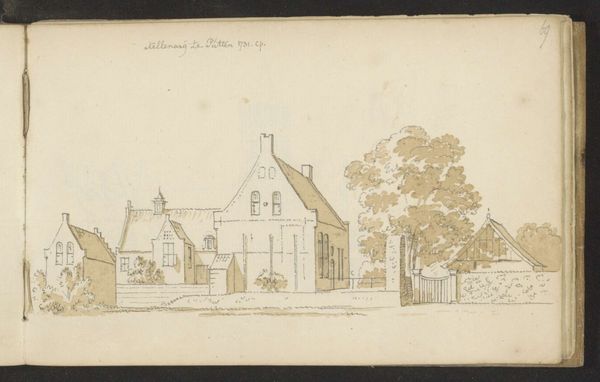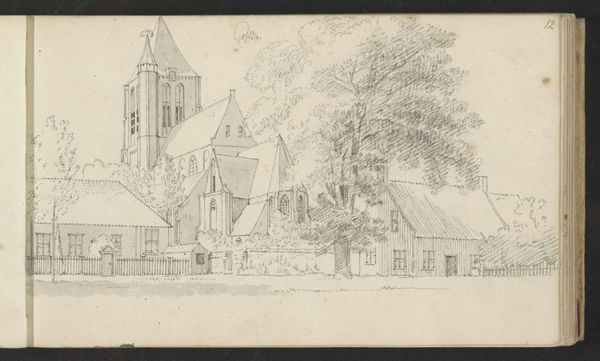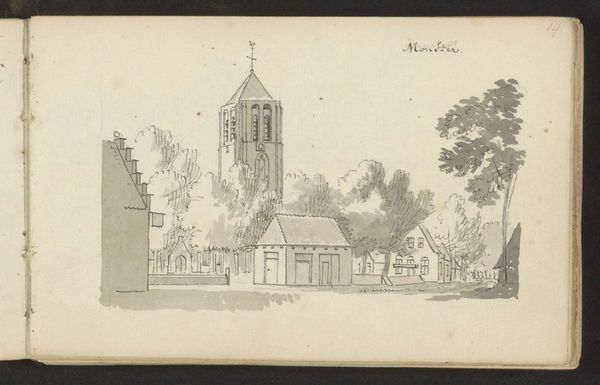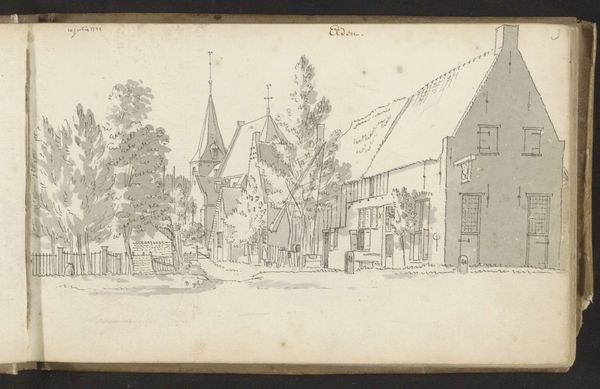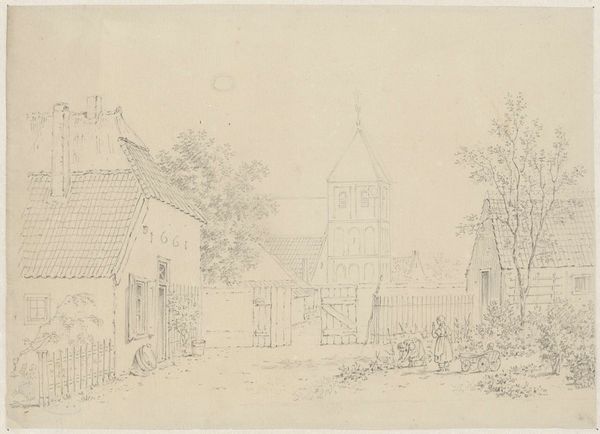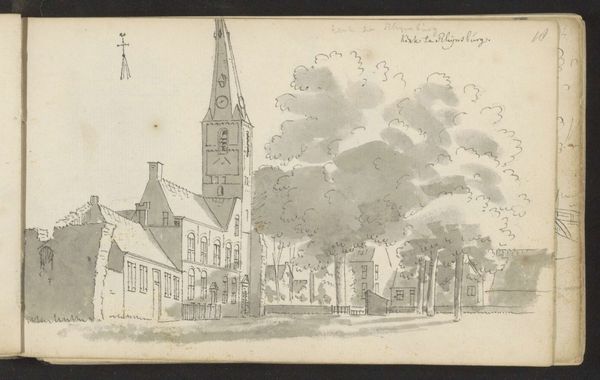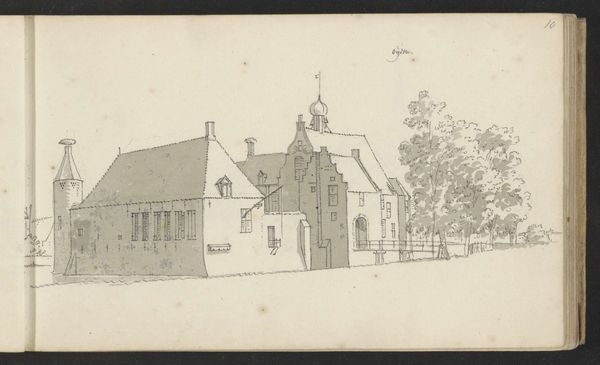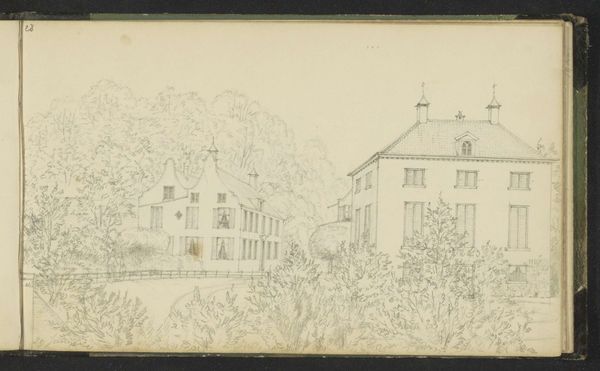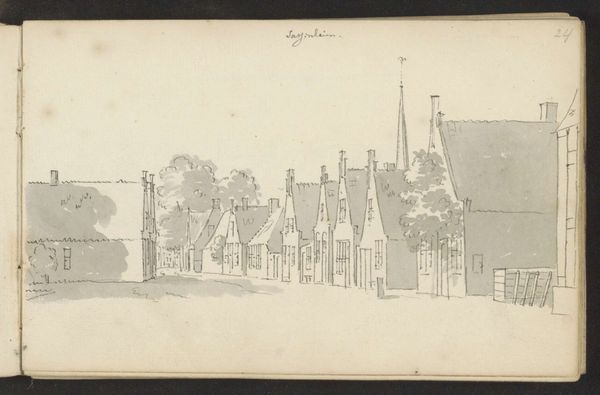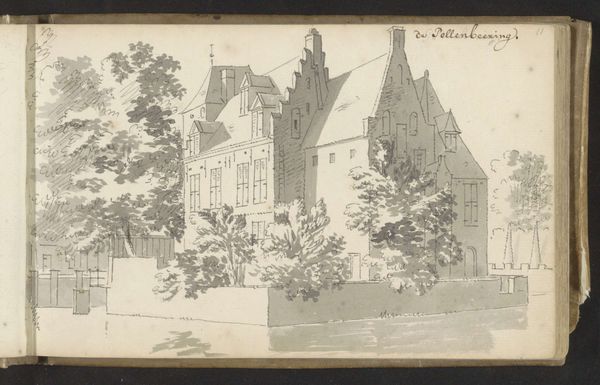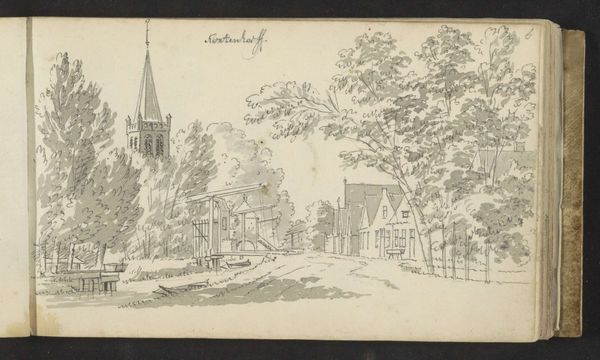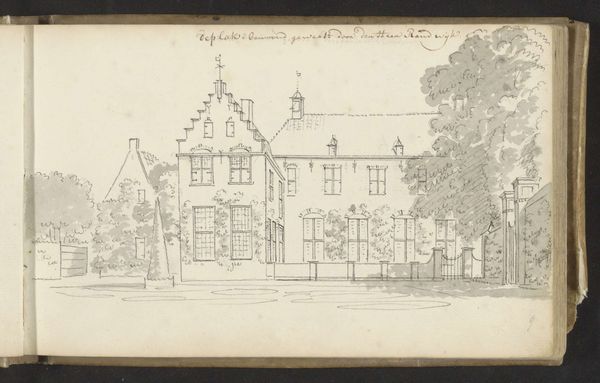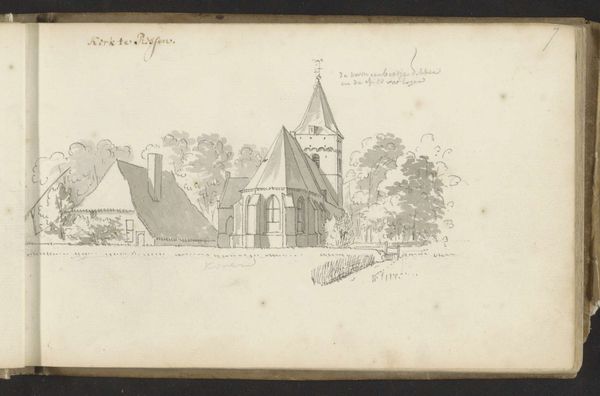
drawing, ink, pen
#
drawing
#
aged paper
#
dutch-golden-age
#
pen sketch
#
sketch book
#
landscape
#
personal sketchbook
#
ink
#
sketchwork
#
pen-ink sketch
#
pen work
#
sketchbook drawing
#
pen
#
cityscape
#
storyboard and sketchbook work
#
sketchbook art
#
realism
Copyright: Rijks Museum: Open Domain
Editor: Here we have Cornelis Pronk’s "Gezicht te Dieden," created sometime between 1701 and 1759, a pen and ink drawing from the Rijksmuseum collection. It feels so personal, like a quick sketch from a traveller's journal. What do you see in this piece beyond the immediate impression? Curator: It’s interesting you pick up on the “personal” aspect. Pronk was known for his detailed topographical drawings, often commissioned. However, the apparent spontaneity belies the controlled dissemination of imagery. Consider who these "views" were for. They shaped how the Dutch Golden Age saw its landscape, framing it for an elite audience. Did the average person get to see Dieden depicted in such a manner? Editor: That's a good point. It seems to depict a quiet, idyllic scene, but the fact that it might have been commissioned suggests a layer of constructed imagery. How did these depictions function politically? Curator: These images solidified a sense of place, ownership, and national identity, serving to both document and promote a specific vision of the Netherlands. The choice of Dieden is relevant. What made this location worthy of recording and circulation? Consider also that landscape became a marketable genre and was a means for a patron to gain social prestige. Does knowing this alter your initial response to the artwork? Editor: It does change it, yes! It becomes less about a simple, personal sketch and more about the construction of an image of the Netherlands. I hadn’t considered the market aspect of landscape art in this way. It feels less like a candid snapshot now. Curator: Precisely. The image itself, seemingly so straightforward, is part of a broader historical and cultural context. Understanding that context can really enhance how we look at even seemingly simple artworks like this. Editor: This has made me think about how even quick sketches can be loaded with social and political meaning. Thanks!
Comments
No comments
Be the first to comment and join the conversation on the ultimate creative platform.
